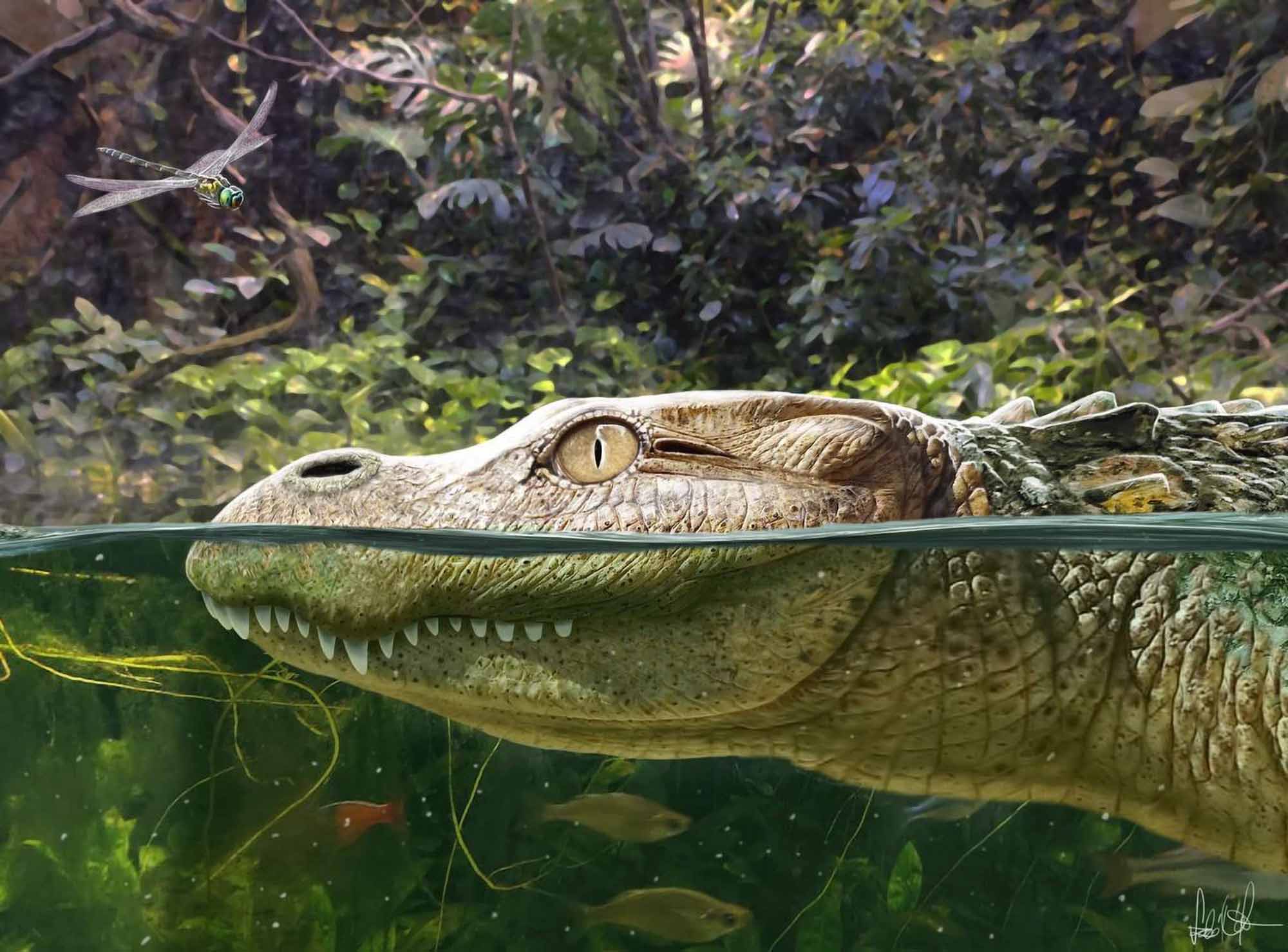An extinct short-snouted alligator species with a skull resembling that of a bulldog nibbled on snails rather than other larger prey when it lived about 230,000 years ago.
The groundbreaking discovery was led by researchers from the University of Tuebingen, in Germany, who analysed the species’ fossilised skull that was discovered in 2005.
Named ‘Alligator munensis’ – after the Mun River, which flows near the site at Ban Si Liam, Thailand, where the skull was found – the reptile is believed to be related to today’s critically endangered Chinese alligator (Alligator sinensis).
Paleontologist Dr Marton Rabi studied the skull’s morphology along with the Chulalongkorn University and Department of Mineral Resources of Thailand.
He revealed that the Chinese alligator is the only living member of the caiman and alligator family outside of the Americas.
Rabi said in a statement obtained by Newsflash from Tuebingen University: “We compared the skull to both the Chinese and the American alligator as well as with fossils of four extinct alligator species.
“The skull of A. munensis from Thailand is a little like that of a bulldog. It has some special features that are absent in all other species.”
The extinct reptile’s skull was quite large, in contrast to a short, and very broad and deep snout.
It had a reduced number of tooth sockets, while its nostrils were located far from the tip of its snout.
Its body length was reportedly similar to its modern relative’s and varied between one and a half to two metres (4.9 to 6.5 feet).

The study’s first author Gustavo Darlim suggested that the two species may have shared a common ancestor and said: “The new species has the most similarities with the Chinese alligator.”
The team speculated that the animals’ predecessors lived in the lowlands Yangtze-Xi and Mekong-Chao Phraya river systems.
They then reportedly separated during the period of the uplift of the southeastern highlands of Tiber between 23 to five million years ago.
But unlike its lucky relative, the Alligator munensis did not survive to witness the modern era.
Rabi added: “The large tooth cavities in the skull of Alligator munensis indicate that it had large teeth in the back of its mouth that could be used to crush shells, such as snail shells.”
The researcher stated that such spherically flattened large teeth with a similar function were common in crocodilians but have evolved over time and are not found in living species today.
The Chinese alligator – listed as ‘critically endangered’ on IUCN’s Red List of Threatened Species – can nowadays only be found along the third longest river in the world, the Yangtze River in China.
Darlim emphasised the importance of protecting the species and suspected that alligators were widespread as far south as Thailand in the past.
He said: “How and when the alligators spread from North America to Asia is not known. Therefore, fossils from Asia are important to further piece together the puzzle.”
The study was published in the British weekly scientific journal ‘Nature’ on Thursday, 13th July.
To find out more about the author, editor or agency that supplied this story – please click below.
Story By: Georgina Jadikovska, Sub-Editor: Marija Stojkoska, Agency: Newsflash
The Ananova page is created by and dedicated to professional, independent freelance journalists. It is a place for us to showcase our work. When our news is sold to our media partners, we will include the link here.




